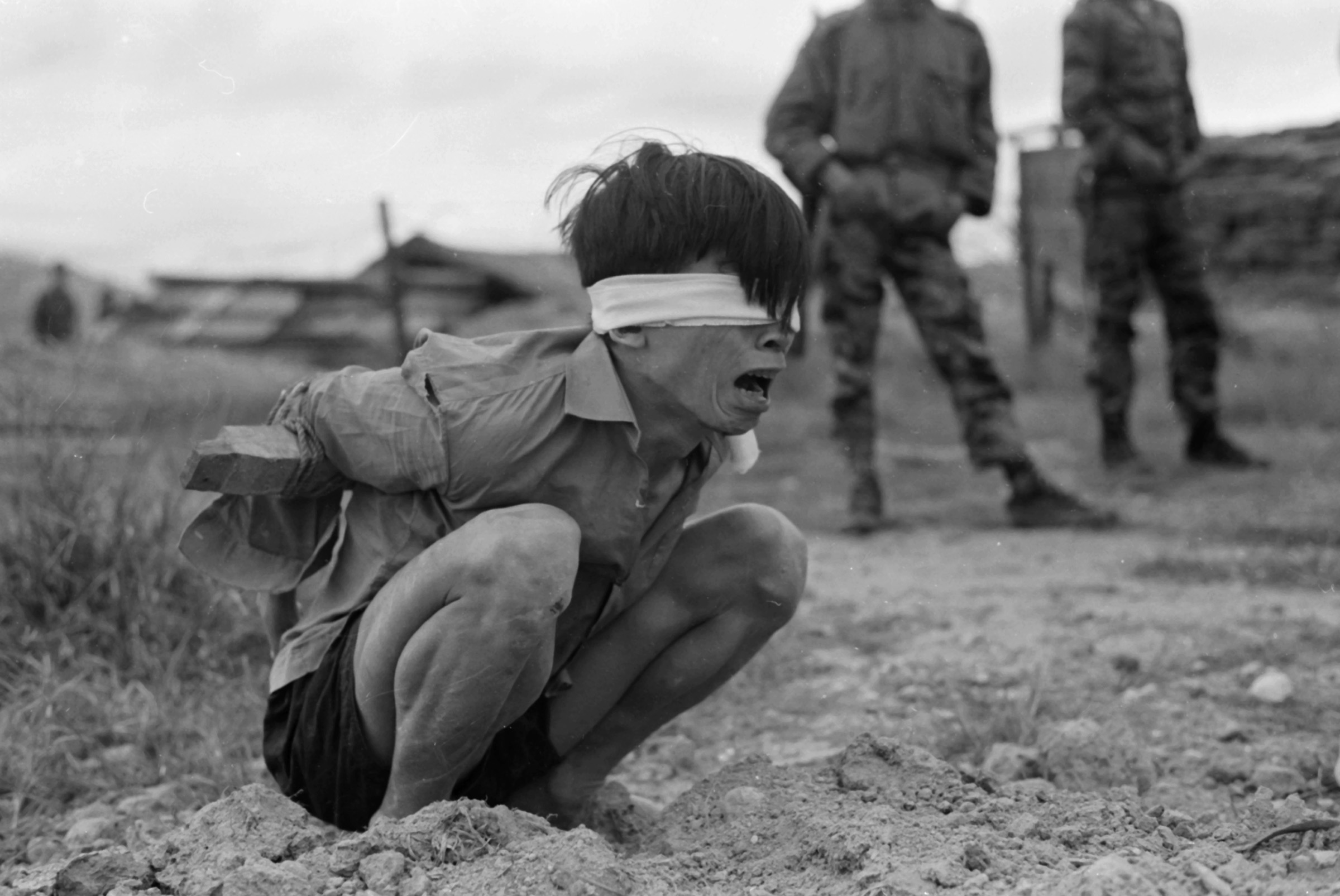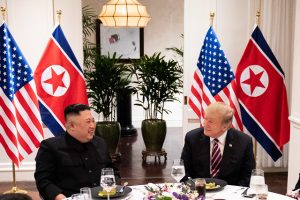by Peter Costantini
“Enhanced interrogation”: the George W. Bush administration bureaucrats who coined the term had perfect pitch. The apparatchiks of Kafka’s Castle would have admired the grayness of the euphemism. But although it sounds like some new kind of focus group, it turns out that “enhanced interrogation” was just anodyne branding for good old-fashioned torture.
Unfortunately, the debate around it unleashed by the report of the Senate Select Committee on Intelligence has largely missed the point.
Certainly, the report provided overwhelming evidence that torture did not produce useful intelligence. The CIA had concluded previously that torture is “ineffective,” “counterproductive,” and “will probably result in false answers.” Some CIA agents and soldiers reportedly questioned the legality of the “enhanced interrogation” policies and resisted carrying them out. FBI agent Ali Soufan, who had legally interrogated prisoner Ali Zubaydah, has written that Zubaydah had cooperated and provided “important actionable intelligence” months before he was tortured extensively.
Historian Gareth Porter has used new evidence from the Senate report to refute the CIA’s claim that information obtained through torture “played a substantial role” in locating and killing al-Qaeda leader Osama bin Laden. The CIA, he says, deceived the U.S. government and public on this point. In fact, Porter contends, the identification of bin Laden’s courier, which eventually led U.S. forces to bin Laden’s compound in Abbottabad, Pakistan, “had nothing to do with the CIA torture program.”
Even a Bush Justice Department lawyer has acknowledged: “It is difficult to quantify with confidence and precision the effectiveness of the program.” In any case, it is impossible to know that intelligence purportedly extracted by torture could not have been elicited by legal interrogation.
Fundamentally, though, whether torture “works” or not is immaterial.
What’s the word? Nuremberg
The Third Geneva Convention and the UN Covenant Against Torture do not exempt torture that somebody believes to be “effective.” The codes are based on neither expediency nor compassion, but rather on hard-headed self-interest. Nearly all nations have formally recognized that by agreeing not to torture non-combatants they can reduce the probability of their own non-combatants being tortured.
Post-World War II tribunals imprisoned and executed German and Japanese officials for war crimes including torture. Nuremberg and Tokyo established the indelible principle that acting as a responsible government official, or following the orders of one, is not a defense against accusations of war crimes.
Granted, these norms have been observed as much in the breach as in practice. And on the blood-soaked canvas of the past century, the damages of torture pale beside the scope of suffering inflicted by the “legal” savageries of war. Yet if the leaders of the richest and most powerful empire in history can claim that defense of the homeland requires torturing prisoners, what other government or non-state actor will hesitate to make the same claim?
Morally, the would-be civilized world continues to recognize torture as intrinsically venomous. It destroys lives on both ends of the cattle prod. The officials that ordered it and now defend it bolster the evidence that the Bush administration was a rogue régime. Dick Cheney, former vice president and current marketing director for the Spanish Inquisition, says: “I’d do it again in a minute.” No one should doubt his sincerity.
The “New American Century” Goes Medieval
One of the “enhancements” was reportedly an effort to fabricate a justification for invading Iraq. High Bush administration officials allegedly put heavy pressure on interrogators “to find evidence of cooperation between al-Qaeda and the late Iraqi dictator Saddam Hussein’s regime” in an effort to fabricate a justification for invading Iraq, according to a former senior US intelligence official and a former Army psychiatrist cited by McClatchy News. No such evidence of cooperation was found.
But beyond such immediate imperatives, the torture policy meshed seamlessly with a discretionary war premised on lies and optimized for “shock and awe.” This neat ideological package asserted the unchallengeable power of a “unitary executive” above constitutional checks and balances, national law, and international treaties. Echoing Richard Nixon’s circular self-justification of three decades earlier, Justice Department lawyer Steven Bradbury told Congress: “The president is always right.”
The Project for the New American Century, a think tank with which Cheney, Defense Secretary Donald Rumsfeld, and other officials were associated, laid down intellectual covering fire for these policies. With the United States the only superpower left, the PNAC apparently concluded that history was over and that the Bush administration had an unprecedented opportunity to remake the world in its own image and demonstrate the futility of resistance. The policies it engendered effectively said to the international community: “The rules we used to agree on no longer apply to us. Here’s exactly how far above international law we are. What are you going to do about it?”
Strategically, the Bush-Cheney project targeted conceptual smart bombs on the very idea of human rights. The rest of the world got the message, and the cracks in the foundations of U.S. national security have yet to be repaired.
“Human Resource Exploitation” 101
“Enhanced interrogation,” however, has roots reaching back decades into CIA collaboration with dictatorships in Latin America.
Brazil’s National Truth Commission recently concluded that from 1954 through 1996 the United States gave some 300 military officers “theoretical and practical classes in torture.” Current President Dilma Rousseff was one of those tortured by the military, which ruled the largest country in Latin America from 1964 through 1985.
Over the past half-century, the CIA has been implicated in providing similar training to military dictatorships across South and Central America. The United States also provided military aid and advice to many of them, participated in coups against elected governments, and was complicit in the murder and disappearance of hundreds of thousands, according to investigative journalist Robert Parry.
In Guatemala, for example, the CIA trained and supported a military and intelligence apparatus that exterminated close to 200,000 people over 30 years and committed genocide against Mayan communities, according to an independent Historical Clarification Commission. The military dictatorship initially came to power in a 1954 coup—planned, organized and executed by the CIA—that overthrew the elected government of President Jacobo Arbenz Guzmán and killed hundreds of his supporters.
Under the Richard Nixon administration, the CIA was deeply involved in the 1973 coup in Chile, which overthrew the elected government of Salvador Allende and led to the torture, disappearance and death of thousands of Chileans.
Of course, none of these régimes needed to be shown how to torture prisoners. But the official trainings put the imprimatur of their sponsor to the north on their atrocities.
The origins of US torture policies go back even further, to early in the Vietnam War. According to the Senate report, “In 1963, the CIA produced the KUBARK Counterintelligence Interrogation Manual, intended as a manual for Cold War Interrogations, which included the ‘principal coercive techniques of interrogation …’.” In 1983, sections of KUBARK were incorporated into the Human Resource Exploitation Training Manual, which was “used to provide interrogation training in Latin America in the early 1980s.”
One of the CIA officers who provided these trainings was later “orally admonished for inappropriate use of interrogation techniques.” But his efforts ultimately proved to be a good career move. In 2002, the CIA made him chief of interrogations, according to the report.
In 1992, the Pentagon destroyed most documentation of these training programs, Parry reported. The orders came from the office of then Defense Secretary Dick Cheney.
Among the key players in these programs, historian Greg Grandin gives special mention to Jose A. Rodriguez Jr., head of the CIA’s Counterterrorism Center for the George W. Bush Administration. Rodriguez reportedly was responsible for destroying tapes of torture and discouraging field agents from questioning the practices, and he continues to defend them.
Throwing Light on the Dark Side
In response to mounting evidence of decades of torture, what would an “indispensable nation” do?
The release of the Senate report was an important precedent. But what has been released so far is only the executive summary. The Senate should release the full report and encourage the Obama administration to act on it. Until perpetrators all the way to the top are brought to justice, the U.S. government will rightly be seen as hypocritical when it criticizes the human rights violations of others.
Ultimately, the gravity and scope of wrongdoing call for a reincarnation of the Senate’s 1975 Church Committee, which investigated abuses by intelligence agencies in the wake of Watergate. It should serve as a truth commission exposing the U.S. government’s use of torture, terror and other human rights violations, going back 40 years to where Church left off.
The official U.S. Senate history of the Church Committee cites historian Henry Steele Commager, referring to executive branch officials who seemed to consider themselves above the law: “It is this indifference to constitutional restraints that is perhaps the most threatening of all the evidence that emerges from the findings of the Church Committee.”
Under the present Republican leadership, with the honorable exception of Senator John McCain (R-AZ), it’s a safe bet that nothing will happen on this front.
Allies, though, have begun digging. In 2009, Spanish jurist Baltasar Garzón Real opened two investigations of the Bush torture program, one of which is still pending. In December, the European Center for Constitutional and Human Rights in Berlin filed complaints accusing several high Bush administration figures of “the war crime of torture” under German and international law.
The odds of seeing Cheney and company in a glass booth may be slim. But it would be a small victory for humanity if they had to look over their shoulders whenever they travel abroad.
As some of us never seem to learn, genuine national security is about not black ops and drones, but hearts and minds.
As an epitaph for the Bush-Cheney vision, consider Percy Bysshe Shelley’s 1818 poem “Ozymandias”:
I met a traveller from an antique land
Who said: ‘Two vast and trunkless legs of stone
Stand in the desert. Near them, on the sand,
Half sunk, a shattered visage lies, whose frown,
And wrinkled lip, and sneer of cold command,
Tell that its sculptor well those passions read
Which yet survive, stamped on these lifeless things,
The hand that mocked them and the heart that fed:
And on the pedestal these words appear:
‘My name is Ozymandias, king of kings:
Look on my works, ye Mighty, and despair!’
Nothing beside remains. Round the decay
Of that colossal wreck, boundless and bare
The lone and level sands stretch far away.
Photo: A Viet Cong prisoner captured in 1967 by the U.S. Army awaits interrogation. He has been placed in a stress position by tying a board between his arms.
Peter Costantini is a Seattle-based analyst who has covered Latin America for the past three decades.






………………and we are repulsed by the treatment of a captured Jordanian pilot. License for this reprehensible treatment lies at the feet of international war criminals, who have violated the covenants of the Geneva Convention, while declaring that they have the authority to determine what torture is. Lest we forget, the use of Napalm was a convenient excuse to clear more than vegetation in the Far East and, unless and until the ICC exacts punishment for the euphemistic ‘enhanced interrogation’ perpetrated by Bush, Cheney, Rumsfeld and their legal advisers, the architects of the disgust we have just witnessed by ISIS, do not fear any retribution at the Hague for their behavior. Physician, heal thyself!
It is a slippery slope – we become what we set out to destroy.
Torture the few, murder the many. Isn’t this what’s taking place today in the “war on terror”? Perhaps before the U.S. engages in torture, then everyone who believes in it, should be made to go through that same torture before giving it a thumbs up. I wonder, does anyone believe that the “gang” who endorsed it, could survive?